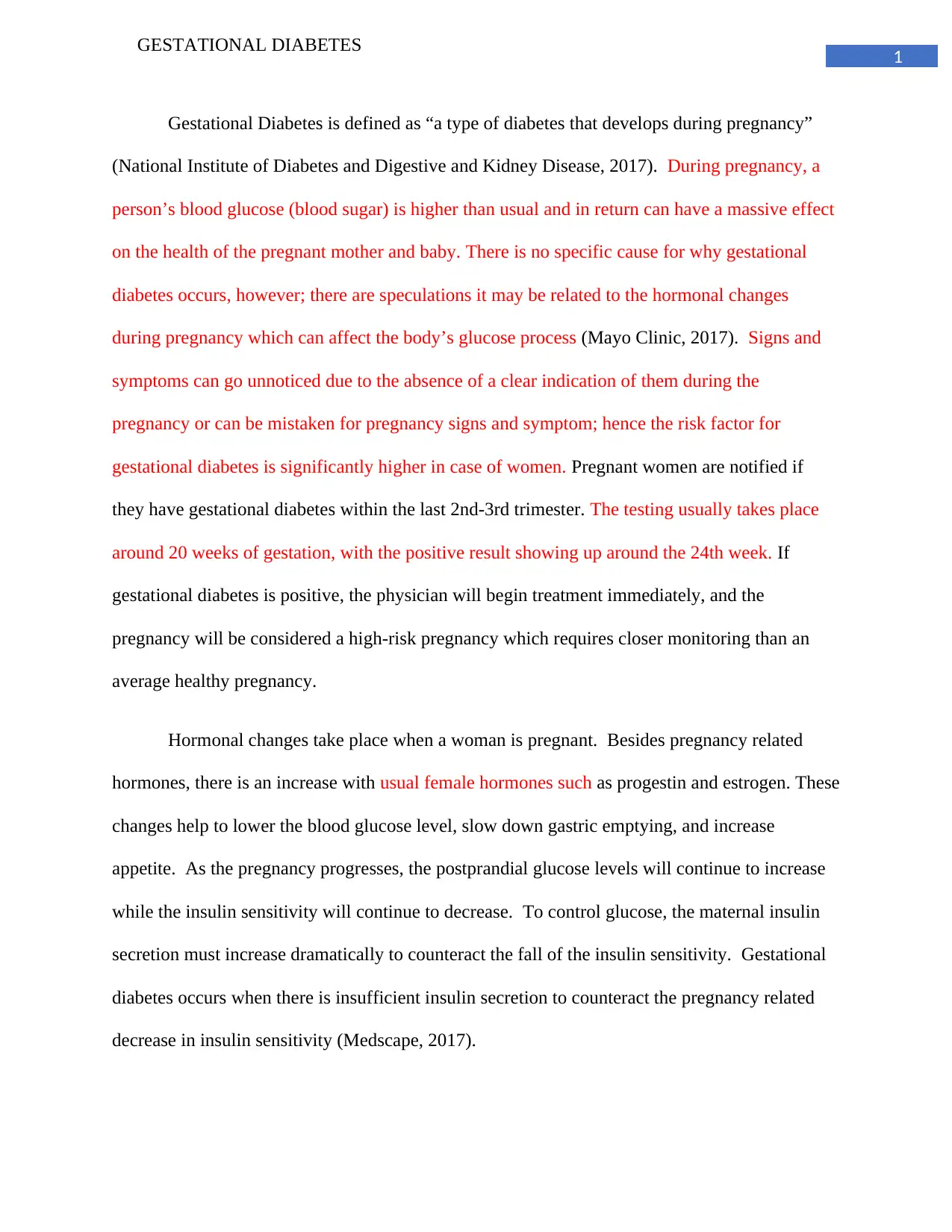Gestational Diabetes: Understanding Causes, Symptoms, and Treatment
VerifiedAdded on 2020/03/16
|2
|353
|376
Report
AI Summary
This report provides a comprehensive overview of gestational diabetes, a condition characterized by elevated blood glucose levels during pregnancy. It delves into the potential causes, including hormonal changes and decreased insulin sensitivity, and discusses the various symptoms that may arise. The report also highlights the importance of early detection, typically around the 20th week of gestation, and the subsequent treatment strategies implemented to manage the condition. These strategies include close monitoring of the pregnancy due to the associated risks, and the impact of gestational diabetes on both the mother and the developing fetus, emphasizing the need for effective glucose control to mitigate adverse outcomes. The report also details the role of hormones like progestin and estrogen and their impact on blood glucose levels during pregnancy. Furthermore, it touches upon the increased maternal insulin secretion needed to compensate for decreased insulin sensitivity, and the consequences when this compensation is insufficient, leading to gestational diabetes.
1 out of 2








![[object Object]](/_next/static/media/star-bottom.7253800d.svg)